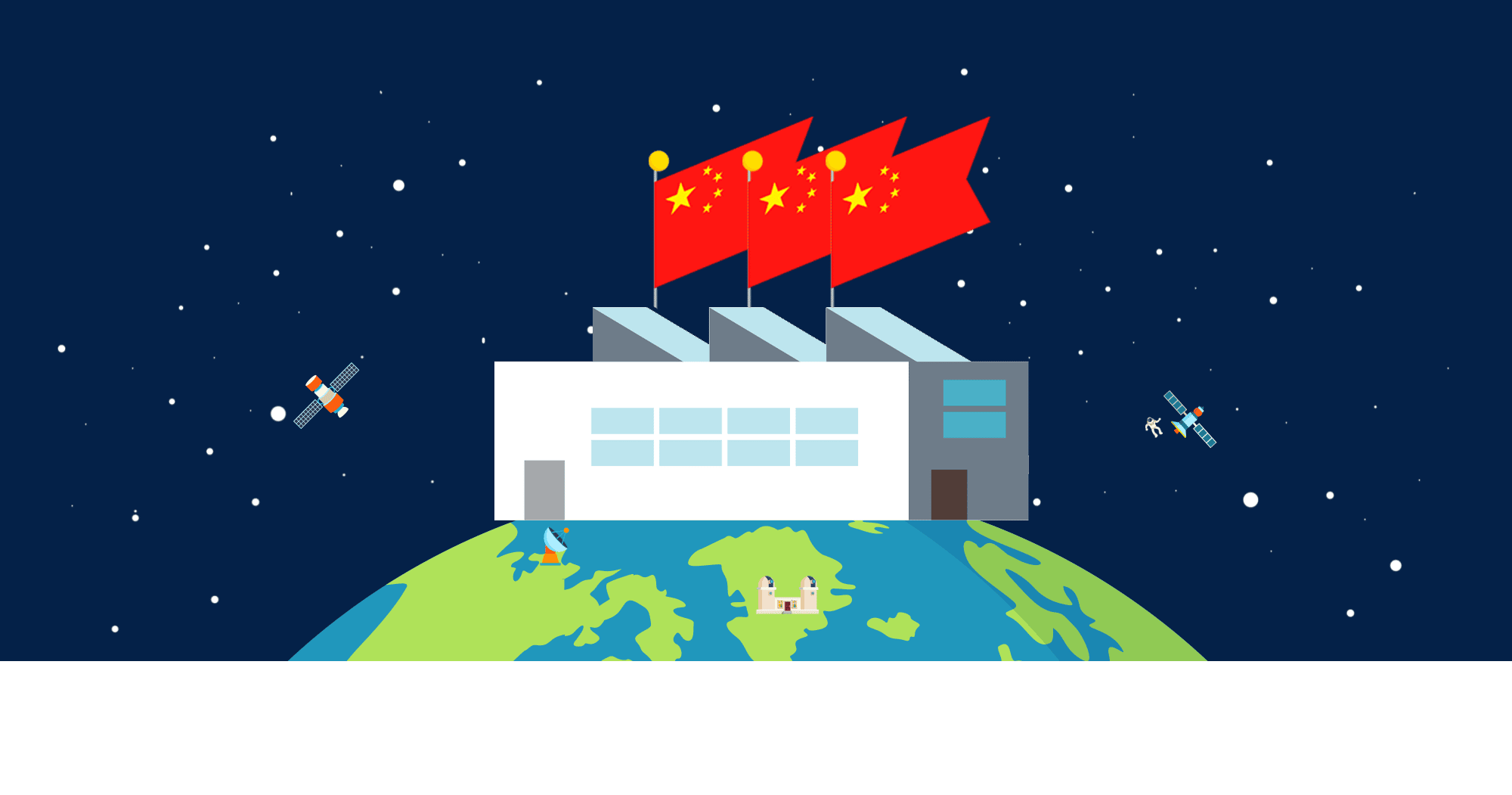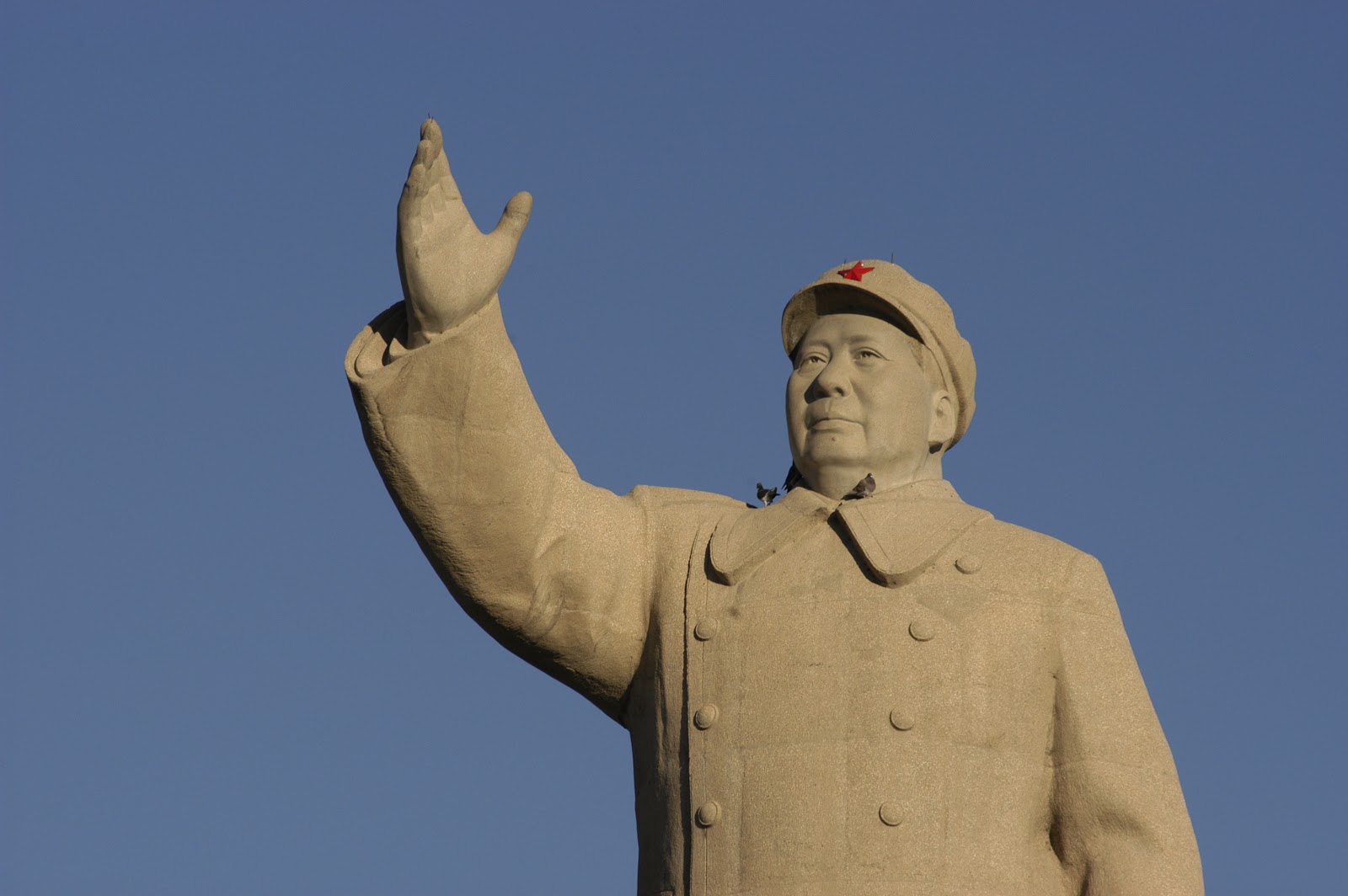How China Became the Largest Exporter in the World

“There lies a sleeping giant. Let him sleep! For when he wakes, he will shake the world.”
These were the words of Napoleon Bonaparte, and it turned out to be an accurate prophecy. What was once regarded as a poor country is now one of the biggest economies in the world.
Since 2009, China has been the world's largest exporter. If you’re an Amazon seller, there’s a big chance that you’re sourcing your products from China.
The history of the country’s rise to power is a noteworthy one, caused by wars, reforms, and sacrifices.
Contents
China Under Mao Zedong
After the war with the Japanese, China had to go through a civil war. It was Nationalists vs. Communists, with the former led by Chiang Kai-shek and the latter by Mao Zedong.
At the time, Chiang Kai-shek was on his way to overthrow the government in Beijing, but with the help of hundreds of millions of peasants who supported Mao Zedong, his army was able to take control of the country.
Under the leadership of Chairman Mao, the People’s Republic of China was established. The Chinese Communist Party (CCP) launched the Great Leap Forward, a five-year social and economic campaign that led to the deaths of millions through starvation and execution.

Because Mao was so keen on developing industrialization in China to compete with the West, he ordered a largely agricultural population to work in factories, with some left to work in communes. His unfounded optimism led to the utilization of unproven agricultural techniques and an unprecedented migration to urban areas that brought famine to the country.
Needless to say, the Great Leap Forward was a massive failure. The five-year program was shortened to two.
However, there were still some positive things that happened because of Mao’s program (if you’re willing to look past the greatest non-wartime killing in history). Literacy improved because of the establishment of village schools, and the so-called barefoot doctors were employed in rural areas.
Deng Xiaoping: The Architect of Modern China
When Mao Zedong died in 1976, new leaders of the Communist Party started to emerge. Most noteworthy of all was Deng Xiaoping. He led China into what it is today through his economic reforms.

While he didn’t completely abandon Maoism (the Marxism-Leninism variety of Chairman Mao), Deng Xiaoping incorporated elements of the free enterprise system throughout his leadership. He made a couple of important changes in the system that resulted in the rise of China from a country whose people suffered from famine to having one of the biggest economies in the world.
The Giant Awakened
Bonaparte’s prophecy was realized during the time of Deng Xiaoping. China emerged from its economic slumber and slowly rose to stability. In 1979, Deng visited the United States, signaling that China has once again opened its doors to diplomatic relations.
His visit to the United States was met with a lot of resistance, even leading to an attempted assassination by the Ku Klux Klan (KKK). However, it did not stop the Sino-US diplomatic relations from being established.
It was during Deng’s leadership that a tax system was created in China. He used Taiwan, South Korea, and Singapore as models in creating his reforms.
Establishment of Special Economic Zones
Although the Republic of China was still a communist country led by the Communist Party, Deng Xiaoping introduced changes that don’t exactly fit the definition of the political theory.
In 1979, the People’s Bank of China was separated from the Ministry of Finance. State-owned enterprises were also privatized. But the biggest change of all was the establishment of Special Economic Zones (SEZs) in Shenzhen, Shantou, Zhuhai, and Xiamen. These places were chosen because of their location—they are coastal cities.
If any of these places sound familiar to you, that’s because you’re probably importing from one of these cities.
The SEZs attracted foreign investors by giving them tax and business incentives. Business owners were even allowed to build their own infrastructures without the approval of the central government. These zones fueled China’s economy and were the tools used for the conversion of the country from economically closed to export-oriented.
Because of the generally low wages given to Chinese factory workers, China quickly became known as the workshop of the world. This is why big companies such as Apple and Adidas choose to manufacture there and why Amazon sellers import from these Chinese cities.
In a 2018 report by Brookings, China is the world leader in terms of manufacturing output. The following table shows the top 5 companies with the highest manufacturing output in 2018, extracted from the same Brookings report:
| Country | Manufacturing Output (USD in Billions) |
| China |
2,010 |
| United States |
1,867 |
| Japan |
1,063 |
| Germany |
700 |
| South Korea |
372 |
A Closer Look at China’s Special Economic Zones
The 2019 World Investment Report defined special economic zones as “geographically delimited areas within which governments facilitate industrial activity through fiscal and regulatory incentives and infrastructure support.”
But because there are thousands of them in China, they can be very hard to categorize because their regulations and economic models are often complex. However, the following are the most common categories of SEZs in China according to worldbank.org.
|
Type of Chinese SEZ |
Description |
| Administrative Areas | Based on existing administrative regions and those that are newly established and run as SEZs |
| Geographical Areas | Based on geographical features and resources |
| International Cooperation | Economic areas established with other countries |
| Local Industrial Parks | Industrial and specific industry parks designated by local governments |
| Industry Clusters | Established to support the development of certain industries |
| Corporate SEZs | Industrial parks established by enterprises with their own supply and market chains |
These SEZs are the biggest contributors to China’s emergence as the world leader in exporting since 2009. And while they started in coastal regions, over the years, more SEZs were established inland to promote regional development.
Other countries with the most number of SEZs are the Philippines, the United States, and India. But because China relies so much on them for economic growth, it houses more than half of the world’s SEZs.
Adding to the complexity of their categorization, it’s also not uncommon for Chinese SEZs to have sub-SEZs. For example, the original provinces are considered as province-sized zones that contain other kinds of SEZs within them.
These zones offer business owners tax incentives and more lenient regulations to encourage them to invest. It comes as no surprise then that they account for the majority (80 percent) of China’s cumulative foreign direct investments (FDIs).
Overall, the establishment of these zones is one of the major reasons why China is now an economic superpower after years of struggle.
China’s Exports by the Numbers
I can constantly talk about how China is the biggest exporter in the world, but how much exactly does this economic giant export? The following tables were generated using data gathered from The Observatory of Economic Complexity (OEC).
|
China’s Export Statistics in 2018 |
|
| Product Exports | $2.59T |
| Exports Per Capita | $1.86k |
| Service Exports | $209B |
| GDP | $13.6T |
|
China’s Top Exports in 2018 |
|
| Broadcasting Equipment | $224B |
| Computers | $147B |
| Office Machine Parts | $100B |
| Integrated Circuits | $90.9B |
| Telephones | $55.3B |
|
Top Countries China Exports to in 2018 |
|
| United States |
$499B |
| Hong Kong |
$282B |
| Japan |
$155B |
| South Korea |
$107B |
| Germany |
$96.9B |
Many Amazon sellers from the United States source their products from China, so if you fit this description, you’re contributing to these numbers.
In 2022, China's top export groups include electrical machinery, vehicles, plastics, furniture, and iron.
The Price of the Rise: What China Had to Pay to Be Great
The economic success that China has isn’t without its consequences. In order to get to where it is today, Chinese citizens had to make sacrifices.
China might be a superpower when it comes to manufacturing and exporting, but those fossil fuels used to fuel factories need to come out in the open, causing massive pollution in the country.

You would think the Chinese government would have learned a lesson from the Great Smog of London in the 1950s, but in order to sustain its rapid industrialization, China’s air has reached hazardous levels, reported using an Air Quality Index (AQI).
People are actually dying because of air pollution in China, but that’s expected of a country that has grown quickly over the years to become an economic superpower.
The Chinese-American Trade War
Because of what President Donald Trump calls unfair trade practices, he set tariffs and other trade barriers against China in 2018. This is his way of forcing China to make the necessary changes. Included in these trade practices are intellectual property theft and trade deficits.
There had also been a surge of counterfeit products in China because of lenient regulations and the ease of manufacturing them. While this doesn’t apply to all suppliers, generally have to guard against your Chinese suppliers using inferior materials. They usually do this gradually so that without regular monitoring, you can end up selling subpar products that can affect your business’ reputation.
Another reason why President Trump imposed heavier tariffs on Chinese goods is to encourage Americans to patronize their own products.
China then responded with its own levies on US goods, prompting Trump to negotiate a bargain. This resulted in the ongoing trade negotiations of the two states.
The agreement has been affected by the recent pandemic, and we all stand watch as the two states settle their differences.
Conclusion
China’s rise to economic power was preceded by wars and famine. Even as the largest exporter in the world today, it continues to face challenges and is paying for its success.
Amazon third-party sellers have leaders like Deng Xiaoping to thank for providing a means for low-cost manufacturing, which now fuels seven-figure businesses.
What do you think of China’s economy? What do you think the future will be like for this giant?




really interesting article, thanks for writing it.
I’m glad you liked it, Keir. I had fun writing it.